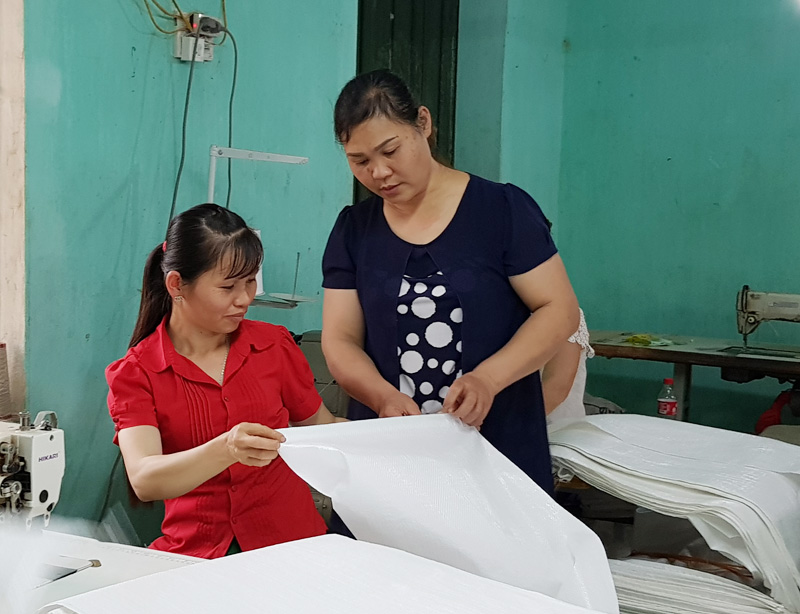
(HBO) – Do Thi Hoa, a woman in Can I hamlet of the mountainous commune of Doc Lap (Ky Son district), impresses other people with her decisiveness, dynamism, creativity and numerous contributions to the locality.
Do Thi Hoa shares experience in making packing materials with
a worker at her workshop.
Hoa and her husband started their business from
zero. They used to farm crops and livestock and do everything they can to earn
their living while keeping alive their dream of getting rich.
In 2006, she learned the "chit” (Thysanolaena
latifolia) broom making techniques from her friends and via media. She realised
that both "chit” supply and local workforce were abundant while many local
women had to go to other localities to seek job during between-harvest period.
Therefore, she decided to borrow money to invest in "chit” brooms production.
With initial successes in making and selling
"chit” brooms, Hoa had some money to continue the production and buying a car
to deliver products.
Thanks to her efforts, hundreds of local
labourers gained an additional job with a monthly income of 2 – 3 million VND.
However, Hoa’s dream did not stop there. She kept seeking ways to find less
strenuous work with more stable income for her workers.
She decided to equip machinery to make
supermarket bags and then packing materials for factories. She owns 18 sewing
machines at present, providing stable jobs and average monthly income of 4 – 5
million VND (about 175 – 220 USD) for workers.
Bui Thi Tam from Song hamlet, who has worked for
Hoa for more than 10 years, said Hoa is an example of exerting efforts in life
and work whom she and many other women admire. According to Tam, Hoa treats
other people as her family members.
Tam said she and many women in the commune are
grateful to Hoa for creating jobs and helping raise their families’ income
while they don’t have to work faraway. At Hoa’s workshop, they also have a
chance to receive vocational training and meet many other women. The life of
her family has also become more stable./.
The Department of Education and Training of Hoa Binh province held a conference on March 18 to review the performance of the "Safe and Happy School" Project and set out tasks for 2025. The project, funded by the Taiwan Fund for Children and Families (TFCF), aims to create a safe, inclusive, and supportive learning environment for students. The event saw the attendance of representatives from the TFCF and 26 beneficiary schools.
With over 70% of their workers being women, trade unions across industrial parks (IPs) in Hoa Binh have been actively safeguarding their legal rights and interests while implementing initiatives to improve their income and well-being.
In recent years, the Hoa Binh provincial General Hospital has continuously innovated itself and improved the quality of medical services to meet the increasing needs of local people. With substantial investments in infrastructure and modern equipment, along with a team of highly qualified doctors and nurses, the hospital has gradually established itself as one of the leading medical units in the Northwestern region and a trusted destination for healthcare for people inside and outside the province.
From mastering the fundamentals of programming to achieving national recognition, the Programming Club of the Le Van Tam Primary School (STAR LVT28) in Hoa Binh city has made remarkable strides in the field of robotics.
The Ho Chi Minh Communist Youth Union Committee and the Vietnam Youth Federation chapter of Hoa Binh province organised a programme on March 12 to launch the "Digital Literacy" movement and an online quiz on the resolutions of the Vietnam Youth Federation congresses at all levels, as well as the Politburo's Resolution No. 57-NQ/TW on breakthroughs in the development of science, technology, innovation, and national digital transformation.
As climate change grows more unpredictable, the development of production forests has become essential - not just for economic growth, but for safeguarding the environment and maintaining ecosystem balance. By boosting local incomes, curbing natural disasters, preventing soil erosion, and protecting water resources, these forests play a crucial role in sustainable development.



